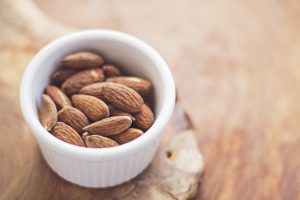 January brings frigid weather and resolutions for goals we hope to achieve in the brand-new year. For many, the cloudy days, long nights, and indulgent holiday treats inspire us to focus on our weight and eating habits. We search for quick fixes, or magic diets that promise a flat belly just by substituting a shake for meals and thirty minutes of exercise a day. This year, join me in resolving to no diet, but to eat healthy, in proportion, and with mindfulness.
January brings frigid weather and resolutions for goals we hope to achieve in the brand-new year. For many, the cloudy days, long nights, and indulgent holiday treats inspire us to focus on our weight and eating habits. We search for quick fixes, or magic diets that promise a flat belly just by substituting a shake for meals and thirty minutes of exercise a day. This year, join me in resolving to no diet, but to eat healthy, in proportion, and with mindfulness.
Eating healthy means eating real food that gives your body the nutrients and energy (calories) it needs. If food comes from a mix, a box, or you cannot pronounce ingredients on the label, pause and consider if it is something your body needs or it is something your taste buds want. Pausing to consider the fuel we put in our bodies is important, and journaling what we put in our mouths can help us increase our mindfulness around eating. By honestly recording the food and amount of each food we eat we can learn much about what our bodies need and our minds want. From a week of diligent, honest journaling we can find patterns: I eat well during the day but then after the kids go to bed I have a large, salty snack every night. Perhaps that salty snack is consumed from high levels of stress that release cortisol and make us crave salt or perhaps that salty snack is a habit from childhood. Recognizing these patterns can show us small, manageable goals to improve rather than the imposing “I need to eat less/better/healthy”. The goal becomes smaller (I will decrease the amount of chips I eat each night to 10). Once that small step is achieved, additional goals can be set (I will decrease the number of nights I eat a salty snack to 2 nights each week).
Mindfulness about what we eat can also help food become something we enjoy rather than battle. As our bodies age our energy (calorie) requirements change. Our energy needs also vary on the level of activity in our lives. If we sit at a desk all day we simply do not need as much energy. Thus, when we eat, it should be with the goal of fueling our bodies with healthy, real, and delicious food.
Slow down, chew, and really taste that piece of fruit. Appreciate it as stored energy from sunshine on a cloudy winter day. Sit with a friend over lunch and enjoy the experience of sharing good food together rather than shoveling food in your mouth at your desk while you answer email. Drink water to fuel your body and to teach your stomach to know the difference between hunger and thirst.
How will you know if your mindful eating works? You will see it in the changing patterns in your food journal and in the way that you feel. No more energy crashes following profound spikes in blood sugar after quick “energy bar” for lunch. Real food, in proper proportions, can make us feel good.
How do you know what a proper proportion is? Do you need fancy containers and measuring cups? No, all you need is your own hand.
Fist = 1 cup = rice, pasta = 200 calories, fruit =75 calories, veggies = 40 calories
Palm = 3 ounces = meat = 160 calories, fish = 160 calories, poultry = 160 calories
Handful = 1 ounce = nuts = 170 calories, raisins = 85 calories
2 Handfuls = 1 ounce chips = 150 calories, popcorn = 120 calories, pretzels = 100
calories
Thumb = 1 ounce = peanut butter = 170 calories, hard cheese = 100 calories
Thumb Tip = 1 teaspoon = cooking oil = 40 calories, mayonnaise, butter = 35
calories, sugar = 15 calories
http://www.prevention.com/weight-loss/weight-loss-tips/your-guide-calories-and-portion-sizes
